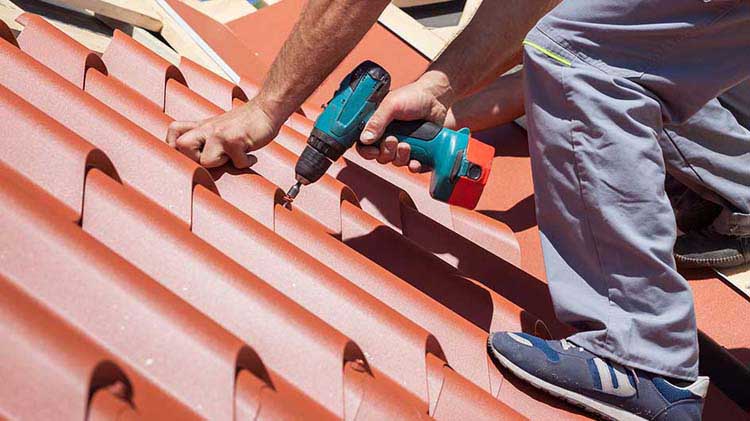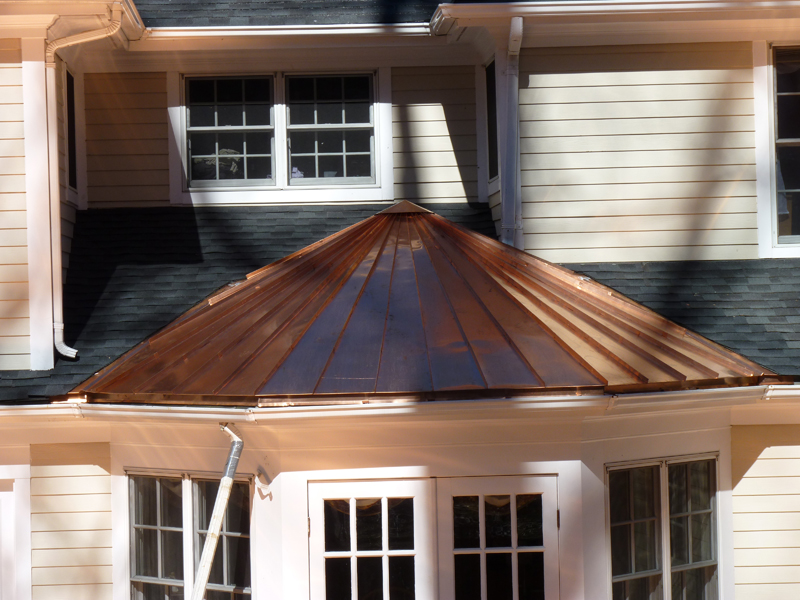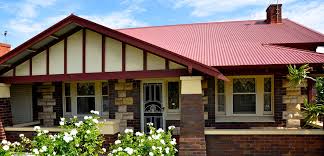Tips For Smart Commercial Roofing Real Estate Investing
Tips To Extend The Life Of Your Roof
A new roof may be the single biggest investment a homeowner makes in their property. Depending on the materials used and the skill of the roofers who install it, the project could cost tens of thousands of dollars. These tips will help extend the life of your roof by keeping current materials in good condition longer.
- Maintain Gutters
Clogged gutters cause roof leaks. When the water has nowhere to go, it will pool along the bottom edge of the roof and slowly deteriorate the facia and roof edge. Homeowners can clean gutters on their own. However, if there’s a lot of debris in the gutters, it could be a messy job. If you don’t feel confident on a ladder, contact a roofer to do this dirty job for you.
- Trim Nearby Branches
Trees provide shade, but they can also cause a roof to fail early. The problems large trees may cause to your roof can far outweigh the benefits if proper care is not taken. When leaves don’t fall off of the roof naturally, moisture gets trapped under them. These leaves could also get caught in the gutters.
Large branches may fall and damage your roof during a storm. Any branch, large of small, which contacts the roof will scratch the surface of your roof; while this damage may be small and unnoticed at first, eventually it becomes apparent. Trim them and your roof will last longer.
- Ventilate the Attic
Proper ventilation allows cool air to enter the attic and warm, humid air to escape. Too much moisture in the attic will result in mold that can damage the insulation as well as the roof. Ventilation also saves money on cooling bills. Hot air trapped in the attic can make the entire house warm and overwork the air conditioning system.
In order for ventilation to work properly you need both soffit vents near the lower section of the attic area and some type of roof vents near the highest part of the attic. This allows cool air to enter and the hot air to escape.
There are many different types of vents to choose. Each vent serves different types of roof styles and slopes.
- Insulate to Keep Heat Out
Shingle roofs absorb heat and, if the attic isn’t properly insulated, interior spaces heat up. It’s important to avoid blocking vents with insulation. Having insulation correctly installed with the right type and amount will ensure it provides the maximum amount of energy-efficiency.
- Get A Professional Inspection Every Year
Inspections are key to preventive roof maintenance. Expert roofers tell you if you have problems that need to be addressed immediately. They will give you more tips to help you keep the roof in good condition for many more years.
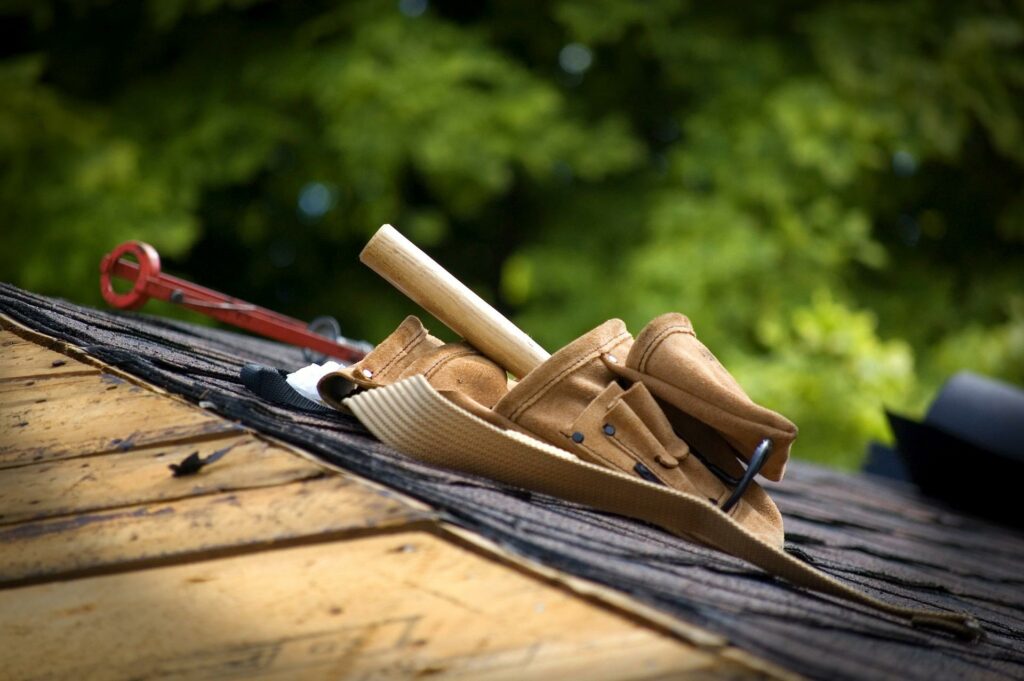
Why attic ventilation is key to roof longevity
Poor attic ventilation can cause a number of problems — including premature aging of the roof.
During the summer months, the temperature in an attic without proper airflow can hit 160 degrees. Such superheated air can penetrate attic insulation, making it harder to keep the home cool and even damaging wallpaper and paint on the floor directly below. Up on the roof it can “fry” your shingles, making them decay more quickly — and the rafters holding up the roof can be weakened by warping and cracking. In the winter, various household appliances, bathtubs, showers and cooking vapors can contribute to excess moisture build up. Improperly ventilated attics will allow this moisture to collect and cling to the underside of the roof.
There, it will condense and fall, soaking the attic insulation and reducing its efficiency. Air circulation in the attic is based on a balance between air intake vents in the soffits and air exhaust at or near the roof’s peak. The Federal Housing Administration recommends a minimum of at least 1 square foot of attic ventilation (both intake and exhaust) for every 300 square feet of attic space. For example, if your attic is 900 square feet, you need a total of 3 square feet of ventilation. This amount is generally divided equally between intake and exhaust ventilation to ensure proper air flow through the attic.
The Importance Of Roof
The roof is an essential part of every home, even the most important one. Many roof experts around the whole world know about the importance of this construction. This significant part of the house is a friend of you, and it’s your safety, it makes your life easier because with a solid roof you don’t need to be worried about extreme weather conditions. During history, every world nation realized its importance. Indians and desert people from Asia and Africa have lived in a tent, an improvised house. But, a tent or a regular brick house, every type of home is composed of a roof. Even if you give a blank paper and a pen to a child there is a high possibility that his drawing is going to be a house. The house in a child’s perception is made of walls, windows, doors and of course roof on the top. So, the importance of roof is strongly infiltrated in people’s psychology from an early age.
Roof, durable construction that visually makes 30% of your house will significantly ensure and make better your daily life. It will protect you whether it is rain, storm, wind or sun outside. People should take this into account if they already have this secure protection because once you build this construction, you are obliged to take care of its function, appearance, and endurance. Therefore, regular maintenance of your roof will help prolong the roof’s life and your life’s safety too check out Storm Pros as good quality of your roof construction is a good pointer of the roof’s endurance. If roof maintenance is regular and appropriate, it will make sure your roof last longer and achieve its purpose.
Extend The Life Of Your Roof In 3 Simple Steps
- Inspect
- Skylights – Inspect the seals around your skylight. Often debris can get stuck or wedged around the edge of a skylight, degrading the seal. If your seal is cracked or worn, reapply sealant to prevent leaks. It is critical to keep water from penetrating a worn seal, for moisture can cause signficant damage to the roof or the roof deck.
- Flashing – Inspect the flashing around your chimney and vents. These areas of the roof are the most prone to leaks. Again, proper sealing of this area will prevent the moisture seeping into your roof and causing further damage.
- Roofing Material – Inspect your roof to make sure the shingles, shakes or metal decking is not cracking or lifting. If the roofing material is damaged, we would suggest these areas be repaired to avoid additional damage to the exterior and interior of the home.
- Attic – Inspect the visible underside of your roof in the attic. Look for damage or staining on the plywood, as these indicate that the roof is leaking. Any watermarks should be assessed to determine where the leak is coming from and fix it before more extensive damage happens.
- Clean
- Debris – Keeping your roof free from debris will extend its lifespan. Moisture can be trapped under debris, which will degrade the roofing material over time. In addition, debris may prevent proper water flow off your roof which can result in damage to other roof areas, overflowing of gutters and accelerated roof aging.
- Algae and Fungus – Algae and fungus growth on roofs are a common problem for homeowners in the Northern Virginian and Maryland areas. Cleaning these growths from the roof with a bleach solution will help prevent damage and pre-mature aging as well as unsightly black streaking.
- Gutters – Cleaning your gutters of debris, leaves and sticks will prevent any disruption in water drainage from your roof. If gutters become full or clogged, rain water will spill over the top of the gutter and onto lower areas of the roof. As the roof below is not built to handle this increased water flow, the roofing material will show wear and can develop leaks over time.
- Remove
- Water – Removing water from your roof seems obvious to keeping your roof intact for many years to come. Look out for moisture pooling on the roof and eliminate the cause of the puddling. Standing water is the fastest way to ruin and shorten the life expectancy of a roof.
- Snow – If your home is hit with a heavy snow storm, removing the weight of the snow will extend the life of your roof. Removing the snow prevents your roof from buckling due to the increased weight and keeps your roofing material in good shape by preventing long term moisture exposure as the snow melts.
- Tree Branches – Tree branches that have a tendency to grow over a roof should be removed for two reasons. First, removal will prevent them from breaking off and damaging your roof during a storm. Second, removal will allow your roof deck to dry out completely in between storms. Since tree branches cause shade and trap moisture, the roofing material in these areas will wear far faster than a roof that can dry out completly.
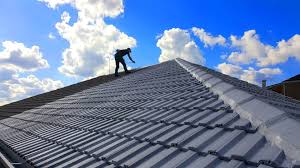
Here’s how preventative maintenance helps extend the life of your roof:
- Know what’s going on
You can’t know what’s happening up there without looking. An experienced professional will know what to look for and where, and will be able to inform you about your roof’s overall condition. Knowing your roof’s overall condition will help you create a plan for repairs and eventual reroofing in a way that’s aligned with your business objectives.
- Focus on known problem areas
Regular inspections include looking at all the various areas where problems are likely to happen. Flashing, penetrations, wrinkles, seams and T-joints are all common problem areas. Better to spot and deal with a problem area before it becomes a leak. Leaks lead to bigger problems and can compromise the integrity of your roofing system.
Wet insulation, for example, doesn’t do its job and it’s a lot more difficult to replace insulation than to manage a problem area before it leaks.
- Recognize when something has changed
When you have the same technician maintaining your roof season after season, they know when something looks different. Hopefully the technician has also taken photos and submitted maintenance reports — there’s nothing like complete maintenance records to help you make good decisions.
Preventative maintenance helps you track and respond to changes in your roof or your roof’s performance, which in turn extends its life.
- Complete easy repairs on the spot
A lot of roofing problems can be fixed during the inspection visit. Maybe there’s a small tear in the membrane from someone walking on it, or maybe a piece of flashing needs repair. These can be completed quickly at little or even no cost, depending on your maintenance agreement. Think of it like taking your car in for tuneups. Your mechanic can spot things that are a little off and make adjustments on the spot so when you drive home, your engine performing better. Well-performing roofs (and engines) last longer.
- Complete larger repairs correctly
When your maintenance technician works for a full-service roofing company and finds a problem that requires a repair crew, the technician will call in a crew with the right skill sets for the job. If you don’t have an existing relationship with a full-service roofing company, the company you call in to fix the problem may not use the best approach for your unique roofing system. It’s best for the longevity of your roof that major repairs to be completed by experts who are familiar with your roof, its history, and its idiosyncracies.
- Understand roof performance from a strategic perspective
Familiarity with how your roof performs over time allows you to be strategic. Each time your technician inspects your roof it adds to the knowledge bank about how it performs. And the more information you have, the better you can plan. Make sure to get a report and photos after every maintenance visit.

